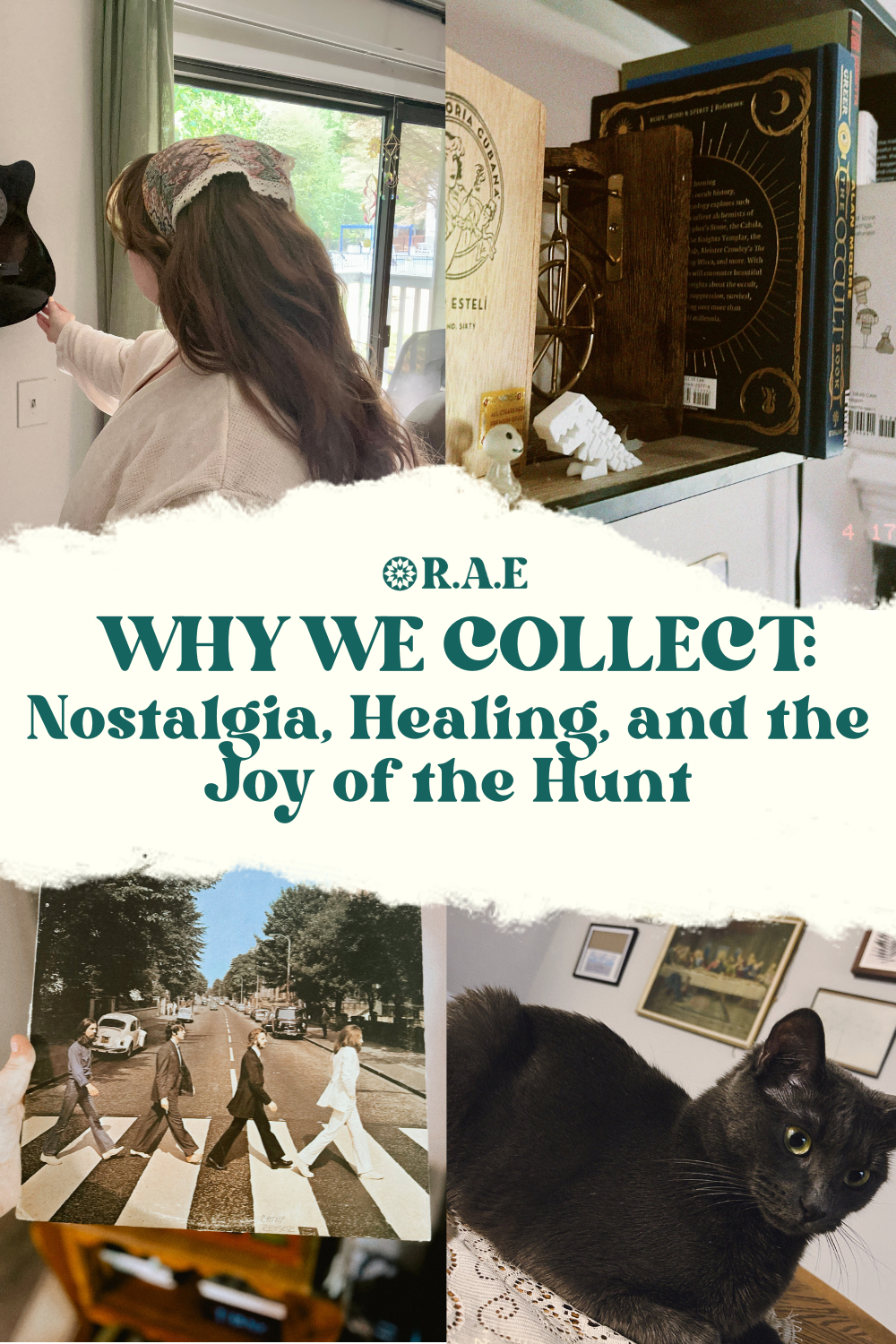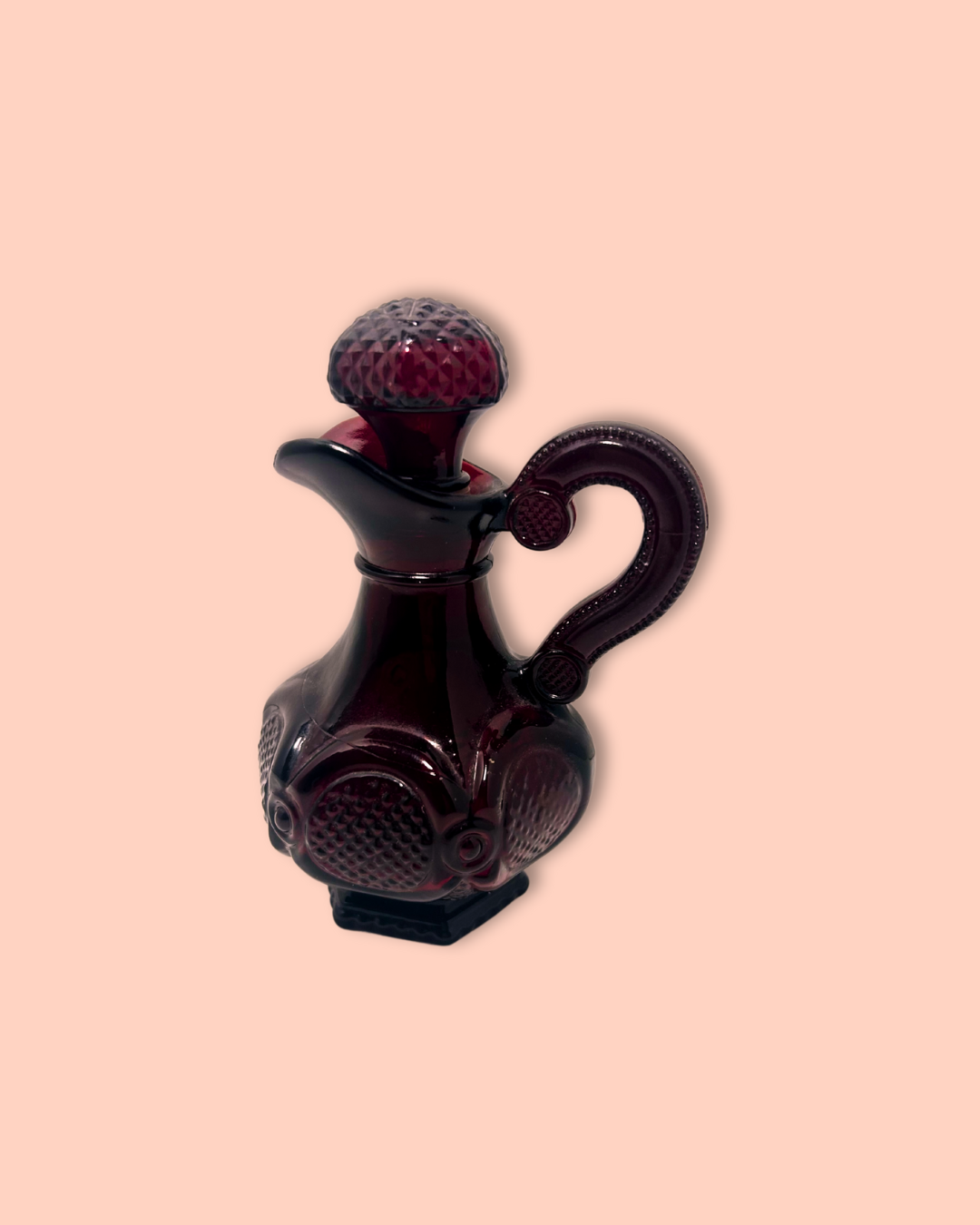
Why We Collect: Nostalgia, Healing, and the Joy of the Hunt
Share
When I was 15—like many other teens in the 2010s—I got really into The Beatles. I loved their music, filled with live instruments: guitars, bass, drums, and piano. It felt grounding compared to the synth-heavy pop dominating the charts back then. In other words, I was a 2010s hipster at 15 years old.
I remember one particular day, tagging along with my grandma and mom to an antique store. At the time, I thought it was just another boring shopping trip. But as soon as I walked into that old building, a wave of nostalgic must and potpourri hit me. Suddenly, I was transported to a different world—one where the everyday stress of teenage life didn’t matter. Instead, there was joy in bright patterns, funky colors, and kitschy collectibles.
That’s when I found the vinyl records—sitting in an old milk crate, as they often are. And there it was: Abbey Road. The Abbey Road. It felt like a legendary discovery to my 15-year-old hands. I bought it immediately and held on tightly to the feeling it gave me. After that, I was hooked. Antique stores became magical treasure hunts, and vinyl collecting became a new passion. Black Sabbath, Paul McCartney, Fleetwood Mac—some of my favorites. And honestly? That love never left.
So what is it that makes collecting feel so special—and so safe?

I’m no expert, but I believe collecting, in healthy moderation, brings a sense of comfort and safety. It reminds us that the world is still full of beauty and creativity. It invites us to be part of that—maybe even add something of our own. Collecting feels like holding on to little talismans that connect us to something grounding and familiar, like nostalgia in physical form.
According to Psychology Today, “around 30 to 40 percent of the American population collects one thing or another.” That’s roughly 100 to 133 million people! So, why do so many of us feel compelled to collect?
The Dopamine Hit: Searching and Finding
When I walk into a thrift store or antique shop, I get this rush of energy, like I’m on a mission. I’m buzzing with anticipation—what hidden gem might I uncover today? Then suddenly, there it is: the perfect piece! That moment fills me with joy and this instinctive need to protect it. Maybe it’s the ADHD. Maybe I’m just a little weird. Probably both. But I also think there’s something neurological going on.
Shirley M. Mueller, a neuroscientist and collector, explains that the rarity of an item can activate specific parts of the brain. Through what’s called the “Oddball Experiment,” researchers observed brain activity spike when participants were shown a sequence of ordinary objects interrupted by something extraordinary. The brain literally lights up when we stumble across that one special thing.

Nostalgia as Escapism
As I mentioned, visiting my great-grandparents’ house was a huge part of my childhood. It was a quaint little home with a big tree in the front yard, an American flag waving proudly, and a garden planted with love. Their town, Westminster, SC, had a population of about 2,500 people twenty years ago. Coming from the suburbs of Atlanta, it felt like stepping into a time machine.
Whether it was a romanticized version of the past or not, being there brought me peace.
Mueller also notes that some collectors feel a sense of history through the objects they gather. By owning pieces from the past, they feel closer to ancestors, meaningful people, or distant eras. Collecting becomes a way to build legacy—something to pass down.
That really resonated with me. I realized my collection wasn’t just about vintage stuff; it was about bringing to life the stories my grandparents told. I could escape the digital noise of Amazon, malls, and Walmart, and instead create a world that connected me to my roots.

A Healing Practice
I found joy in collecting during a time when I was drowning in teenage angst, depression, awkwardness—and a whole lot of family drama. Everything felt chaotic. I didn’t know where I belonged.
But this little hobby—this love for antiques—became a way to carve out a space that was mine. I began to build the world I mentioned earlier, piece by piece. Looking back, I can see that this was a form of healing.
Mueller also shares that collectors often feel pride in acquiring rare or beautiful objects, especially when assembling them into cohesive collections. That moment of discovery? It can feel like validation—like you’ve found something that sets you apart.
I definitely found part of my identity in my collections. Maybe I was that “weird girl who loved The Beatles.” But I was happy being her. And in that happiness, I distanced myself from the chaos around me. It was a quiet rebellion—a gentle act of restoration. Not just for the vintage items I saved, but for myself.
Even now, when life gets overwhelming, I find myself returning to this healing practice: collecting, restoring, exploring. In doing so, I continue rediscovering and adoring parts of myself.
Final Thoughts: A Gentle, Joyful Ritual
Vintage collecting isn’t just about stuff. It’s about finding beauty in forgotten things. It’s about reconnecting—with the past, with creativity, and with yourself.
If you’ve ever felt that little spark of joy while thrifting, flipping through vinyl, or rescuing an old teacup from a dusty shelf—you know what I mean. It’s more than a hobby. It’s a healing ritual. And it’s one I plan to keep practicing for life.
Sources:
-
Mueller, Shirley M. Inside the Head of a Collector: Neuropsychological Forces at Play. ORO Editions, 2019.
-
“Why People Collect Things.” Psychology Today, www.psychologytoday.com/us/articles/200005/why-people-collect-things.
